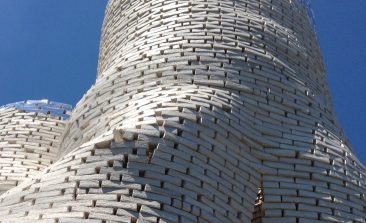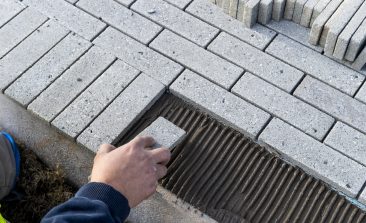Content to: Construction industry
How Software is Helping Achieve Climate-Neutrality in Buildings
Construction, materials, and type of heating all play a crucial role in determining the amount of CO2 emissions a building will generate over its lifespan. CAALA's software can accurately calculate and optimise these factors from the outset.
Metr: How Digital Solutions Are Driving Down Real Estate Costs While Improving Sustainability
Could digital solutions be at the forefront of the construction industry's mammoth carbon footprint? Experts agree - they have potential. But the answer to making our buildings "smart" could be more complicated.
Low-Tech, High Comfort: A Sustainable Vision for School Buildings
Together with the city of Aalen, climate-positive architects, engineers and teachers have planned a futuristic school building.
Planting Seeds in Building Construction: How Living Walls and Digital Technology Are Enhancing Sustainability
Living walls are a practical — and beautiful — way of adding greenery while lowering heating emissions in our cities. Here's how technology could be used to aid them.
Will Buildings in the Future Be Built From Mushrooms?
What if we could upcycle agricultural waste into a cheap, sustainable and biodegradable building material? Mycelium shows it's possible.
Used Diapers Show Promise as a Sustainable, Cheap Building Material
Scientists in Japan hope their innovative building material can provide affordable housing while cutting down on sand use and significantly reducing the number of diapers that end up in landfills.
Biomason: Can Bacteria-Built Cement Clean Up Construction?
Traditional cement is dirty, slow and unwieldy. A US-based startup hopes its new biocement can help change that.
Leanheat: Saving Heating Costs and Energy With the Help of Machine Learning
A Finnish company wants to make heating systems more efficient by harnessing the power of artificial intelligence - collecting data on electricity prices and consumer behaviour to sink costs, CO2 emissions and even the likelihood of repairs.
Fire-Resistant Building Blocks Made From Rice Residue and Ocean Plastic
Many of the inventions that we use in modern society were born from "failure", discovered accidentally, while somebody was busy trying to create something else. That's how we ended up with the microwave and penicillin. And that's also how HiperIn was created, a brand new type of material that could reduce the environmental impact of the construction industry.








